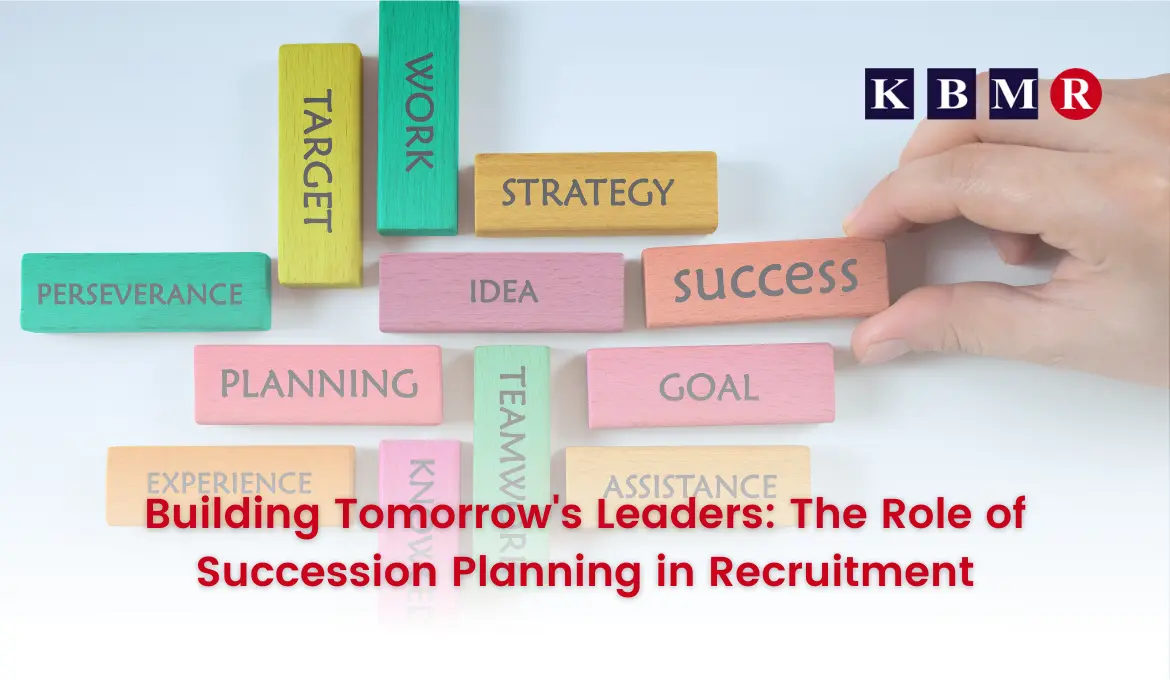In today's rapidly evolving business world, the need for effective leadership has never been more critical. As organisations strive to adapt to change, navigate uncertainty, and drive innovation, the importance of grooming and nurturing future leaders has become increasingly evident. Succession planning, searching and developing internal talent to fill key leadership roles plays a vital role in organisations' long-term success and sustainability. In this blog, we'll explore the significance of succession planning in recruitment and how it contributes to building tomorrow's leaders.
Anticipating Leadership Vacancies
Succession planning involves proactively identifying potential leadership vacancies and developing a pool of qualified candidates to fill those roles. This process starts with a thorough assessment of current employees' skills, capabilities, and likelihood.It's important to look beyond the obvious candidates and consider those who might have the potential to grow into leadership roles with the right support and development opportunities.By anticipating future needs and assessing current employees, organisations can minimise the risks associated with unexpected departures and ensure a smooth leadership transition.
Fostering Talent Development
Succession planning is not just about filling vacant positions—it's about fostering talent development and nurturing the next generation of leaders. HR professionals play a crucial role in this process, through mentoring, coaching, training, and leadership development programmes.They can groom high-potential employees and equip them with the skills, knowledge, and experience needed to excel in leadership roles.
Retaining Top Talent
Investing in succession planning is a testament to the value of employees' contributions and the opportunities for growth and advancement within the organisation.By offering career progression paths and development opportunities, organisations can foster a sense of hope and motivation, increasing employee engagement, loyalty, and retention, and minimising turnover and the associated recruitment and onboarding costs.
Maintaining Continuity and Stability
Effective succession planning not only ensures continuity but also brings a sense of security and stability to the organisation. It minimises disruptions to business operations and strategy execution, allowing for seamless transitions.By having a pipeline of qualified candidates ready to step into leadership roles when needed, organisations can maintain momentum towards their strategic goals, providing a reassuring and confident environment.
Promoting Diversity and Inclusion
Succession planning is not just about identifying and developing talent-it's about promoting diversity and inclusion within leadership ranks. By actively seeking out diverse candidates and providing them with the support and opportunities they need to succeed, organisations can build more inclusive cultures.This not only brings a broader range of perspectives and experiences at the leadership level but also enlightens and appreciates the value of diversity in the organisation.
Aligning with Business Strategy
Successful succession planning is closely aligned with business strategy. For instance, if a company's strategy is to expand into new markets, the succession plan might focus on developing leaders with international experience.By aligning leadership development efforts with strategic priorities, organisations can ensure that future leaders possess the skills, vision, and capabilities to drive business success in an increasingly competitive and complex environment.
Embracing Technology and Analytics
Advancements in technology and analytics have transformed the way organisations approach succession planning. For example, talent management software can help track employees' performance and potential, while predictive analytics can identify high-potential candidates. By leveraging these data-driven insights, organisations can more effectively identify high-potential candidates, assess their readiness for leadership roles, and track their progress over time.
Conclusion
Succession planning is not just a reaction to potential leadership vacancies—it's a strategic imperative for building tomorrow's leaders and ensuring organisations' long-term success and sustainability.By proactively identifying and developing internal talent, fostering talent development, promoting diversity and inclusion, and aligning with business strategy, organisations can build robust pipelines of leadership talent equipped to navigate challenges, drive innovation, and lead with vision and integrity.As organisations continue to change and adapt to changing market dynamics, the role of succession planning in recruitment will only grow in importance, serving as a cornerstone for building resilient, agile, and forward-thinking organisations poised for success in the future.





